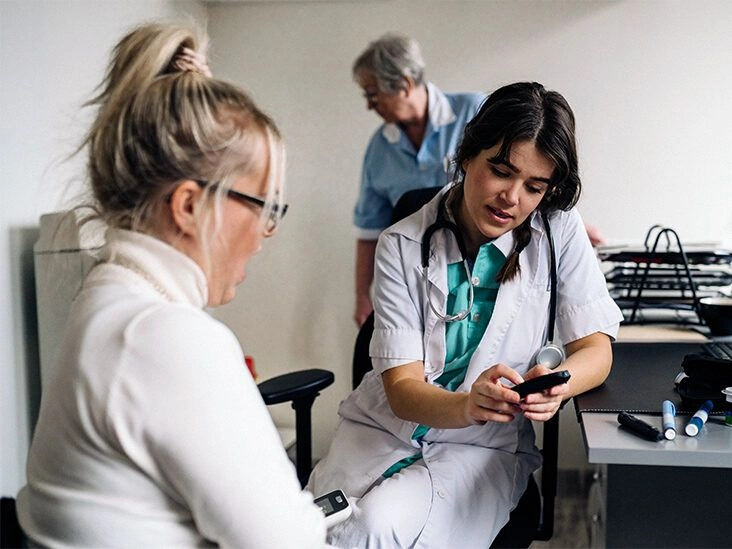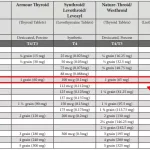The phrases impaired glucose tolerance and prediabetes are generally used interchangeably. They describe a state in which blood sugar is higher than normal and, without lifestyle modifications or other interventions, there’s an increased likelihood of progressing to type 2 diabetes.
You’ve probably encountered the terms impaired glucose tolerance (IGT) and prediabetes often, and may wonder whether they mean the same thing or represent distinct conditions.
In practice, these labels are frequently substituted for one another.
IGT is sometimes called borderline diabetes or prediabetes. All of these terms refer to elevated blood glucose that warrants monitoring but doesn’t yet meet the threshold for a diabetes diagnosis.
Essentially, impaired glucose tolerance indicates blood sugar is raised but not high enough to be classified as diabetes.
Individuals identified with impaired glucose tolerance face an elevated chance of developing type 2 diabetes if no preventive steps are taken.

How is impaired glucose tolerance determined?
Clinicians generally regard blood glucose readings of 200 mg/dL or higher a few hours after consuming the glucose beverage as diagnostic of diabetes and requiring management.
If the blood sugar measurement at the 2-hour point after the glucose drink falls between 140 and 199 mg/dL, this is most consistent with impaired glucose tolerance.
If results are inconsistent or suspected to be inaccurate, your provider might request a repeat oral glucose tolerance test at a later time.
Can impaired glucose tolerance occur during pregnancy?
Although glucose tolerance tests are commonly performed to evaluate risk for prediabetes and type 2 diabetes, they’re also administered to pregnant people late in the second trimester, typically between weeks 24 and 28.
These screenings aim to detect gestational diabetes mellitus (GDM), a kind of diabetes that is estimated to affect a share of pregnancies in the United States.
GDM refers to diabetes diagnosed during pregnancy in people who did not previously have diabetes; the diagnostic criteria are the same during pregnancy.
This condition arises when the body is unable to produce sufficient insulin to meet the increased demands of pregnancy. Doctors only apply this diagnosis to people who were not diabetic before pregnancy. It develops during pregnancy and generally resolves after childbirth.
The Centers for Disease Control and Prevention (CDC) reports that a portion of pregnancies in the United States each year result in a gestational diabetes diagnosis.
Can impaired glucose tolerance be reversed?
Physical activity boosts insulin sensitivity and helps cells take up glucose more effectively.
For this reason, guidelines recommend that people with impaired glucose tolerance or prediabetes aim to lose about 5% to 7% of their body weight and increase their activity levels.
Recommended activities include cycling, brisk walking, or swimming for around 150 minutes weekly — roughly 30 minutes daily — on most days.
Using CDC guidance as an example, someone who weighs about 250 pounds would need to shed roughly 12.5 to 17.5 pounds to help reverse prediabetes and reduce the elevated risk for type 2 diabetes.
Although excess weight and obesity are risk factors for IGT, prediabetes, and type 2 diabetes, it’s crucial to discuss your specific situation and risk with your healthcare team. They can collaborate with you to create a plan to address prediabetes in a way that fits your needs.
Note that the CDC-recognized National Diabetes Prevention Program (NDPP) is an evidence-based program offered across the United States and covered by many insurers (including Medicare) that teaches strategies to reverse prediabetes.
According to the NDPP, participants can reduce their risk of progressing to type 2 diabetes by a significant percentage (up to 71% for those aged 60 and older).

What should you eat if you have impaired glucose tolerance?
If you’ve been told you have impaired glucose tolerance or prediabetes, it’s advisable to consult your physician or a registered dietitian to build a practical, long-term eating plan tailored to you.
Generally, emphasizing whole foods rich in fiber, drinking more water, and cutting out added sugars can improve insulin sensitivity and support weight loss, which may help reverse IGT and prediabetes.
Foods to consider including in your meals are:
- an abundance of leafy greens, such as kale, spinach, and Swiss chard
- cruciferous vegetables like cabbage, broccoli, cauliflower, and Brussels sprouts
- lean protein sources such as chicken, fish, tofu, and turkey
- low-fat dairy options like Greek yogurt and milk
- lower-carbohydrate fruits, including berries and avocado
- healthy fats, for example extra virgin olive oil, seeds, nuts, and natural peanut butter
- beans and legumes, such as chickpeas, lentils, kidney beans, and black beans
How often should you be screened for diabetes?
After an impaired glucose tolerance or prediabetes diagnosis, your provider will often want to monitor your blood sugar (and may check hemoglobin A1C) every few months or at least annually to see whether levels are trending upward, which could indicate progression to diabetes.
Talk with your healthcare team about home blood sugar monitoring if you have IGT or prediabetes, and about risk factors for type 2 diabetes. These risk factors can include:
- being older than 45
- having overweight or obesity
- a family history of type 2 diabetes
- history of gestational diabetes
- being African American, Hispanic or Latino, American Indian, Pacific Islander, or of Asian heritage
Over-the-counter finger-stick glucose meters are available at most pharmacies and are quick and easy to use.
If your clinician suggests home monitoring, they can prescribe test strips. Using insurance coverage for strips may be less costly than buying them at full price in a pharmacy. For guidance on monitoring options, see diabetes blood sugar monitor without finger pricks and general advice on blood glucose monitoring.
The bottom line
Impaired glucose tolerance describes a metabolic state marked by higher-than-normal blood sugar. It’s often referred to as borderline diabetes or prediabetes. Without intervention, people with IGT may go on to develop type 2 diabetes.
An oral glucose tolerance test is the standard way to identify IGT. The test takes a few hours and involves consuming a sugary drink while blood sugar is monitored.
Blood glucose readings between 140 and 199 mg/dL at the 2-hour point are most consistent with impaired glucose tolerance.
IGT can be reversed through dietary changes and increased physical activity. Because of other risk factors for type 2 diabetes, your healthcare team may recommend rechecking your glucose levels every few months.


















Leave a Reply
You must be logged in to post a comment.